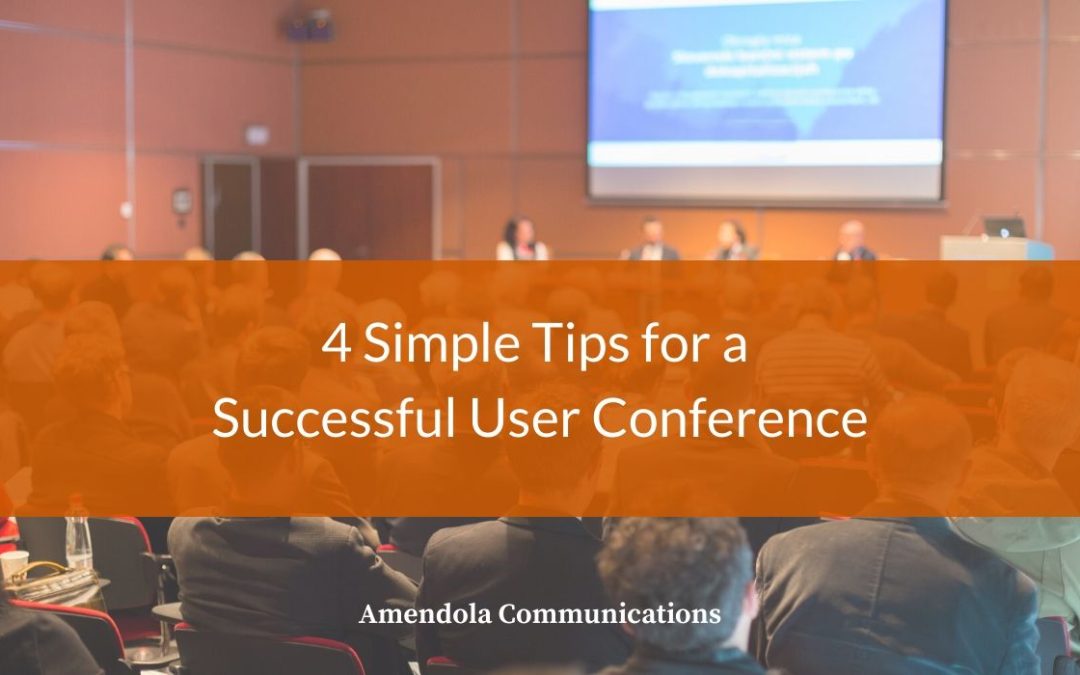
by Brandon Glenn | Sep 23, 2020 | Blog
Nobody expects perfection, and certainly not on the first attempt.
That’s why we always anticipate that the written content we produce for clients will need at least one round of edits – and maybe more. The editing process is without a doubt a key component of content development, ironing the rough edges of copy into smooth, on-message prose that shares the right message with the right audience.
Especially in the world of public relations, in which we write on behalf of clients instead of ourselves, I find that the editing process often contributes key insights that improve the quality of the final written content, whether it’s a byline, press release, case study or other deliverable. It’s that previous point – that public relations professionals are employed to write in the voice of their clients, not themselves – that makes the give-and-take of the editing process so critical.
To understand why, I like to think back to my reporter days, when everything I wrote appeared under my own name. Because my name was at the top of every article, all of this content was written in my own voice. The challenge was to get my own words out of my own head and onto the page.
Public relations is an entirely different animal. Nothing I write appears under my name, and everything I write is done in the client’s voice. That’s where the guesswork comes in. Because I’m writing in a voice other my own and I can’t possibly get inside another person’s head, all public relations writing, at least to some extent, is guesswork.
Now, it’s important to note, that as a PR firm, our job is to reduce that guesswork as much as we possibly can, whether it’s through interviews, background research, asking intelligent questions and the like. But, no matter what, because the content we are writing is in someone else’s voice, in the end PR writing remains based on guessing. The editing process is when clients get their opportunity to evaluate that guesswork and massage the copy into something that resembles their company’s own voice.
Despite its inevitability, though, the editing process can sometimes be painful, fraught with misunderstanding, miscommunication, ambiguity and delays. To help ease the pain and improve efficiency, here are three tips to make the editing process go more smoothly.
Tip 1: Practice safe version control: When we send written content to a client, it’s fairly common that three or more individuals (someone from marketing and a couple of subject matter experts, for example) would like to review and edit the piece. That’s fine and very much encouraged. What’s not fine is when all three individuals send back their own edited copies of the document, which can lead to a lot of confusion and inefficiency. In many cases when this happens, one SME’s edits will contradict the other’s, leaving the PR professional to sort out a way forward while potentially wading into the client’s internal politics. To avoid this situation, practice safe version control. If you’re going old-school and emailing a Word document around, send it to one person at a time, and incorporate the first person’s edits before sending it on for review to the second. Alternatively, online tools such Google Docs allow for simultaneous editing and can help overcome the problem of contradictory edits.
Tip 2: Minimize comments in the right-hand margin: Resist the urge to click the “Comment” button in Word or list comments and suggestions in the body of an email. Nothing else results in so much confusion and ambiguity in the editing process as when the right-hand margin of a document is littered with comments. The writer must read those comments, think about their meaning, actually understand the meaning, potentially go out and obtain some new information, adjust the article’s text in a way that (guessing again!) the author(s) approve of, then send the article back to the client who must review it a second time. If the writer guessed wrong or misinterpreted a comment, rinse and repeat. Perhaps surprisingly, in my own experience, the most difficult part of this process is simply trying to interpret what the commenter is asking the writer to do. Instead of taking the time and effort to describe the changes the writer should make, why not just…
Tip 3: Embrace track changes: Here’s a scenario that describes editing nirvana: In the second half of a sentence, the writer said “A” but the reviewer prefers the sentence to end with “B.” So, ensuring that Word’s “Track Changes” functionality is turned on, the reviewer simply goes into the document and types his “B” directly over the writer’s “A.” The result? No confusion, no ambiguity, no questions, a sentence that reads exactly how the reviewer likes, and no more guessing on the writer’s part. Plus, the writer can now review the document and learn how to adjust copy for next time. And all it took on the part of the reviewer was a little more time and effort compared to leaving a comment.
The editing process holds the potential to bring about complication and confusion that exasperates writers and reviewers alike, but it certainly doesn’t need to. Follow the tips above boost the efficiency and accuracy of your content-creation process while removing the pain from editing.

by Brandon Glenn | Jun 10, 2020 | Blog
Another year, another Cision “State of the Media” report.
The 2020 edition, which represents the 11th annual report in the series, surveyed more than 3,200 journalists from across the globe to provide a picture of today’s media landscape. While much of the yearly report generally reads like PR 101 for experienced public relations professionals, it often contains some nuggets of interest that are worth further reflection.
In that spirit, following are a few notes and observations after digesting the 29-page report:
COVID-19 did NOT change everything: In the marketing and public relations worlds, things can seem to change fast, so it can get easy to become caught up in the moment and lose a little long-term perspective. Don’t allow COVID-19 to let that happen to you. Yes, our professional lives during the pandemic are undoubtedly different in many ways, but lots of things in the media world remain largely as they were pre-pandemic. Email is still the preferred method of pitching. Journalists still want to hear from local and national experts who can offer perspectives that illuminate their audiences. To cut through the noise, pitches still need to be timely, relevant and targeted. These things are unlikely to change any time soon.
The media business continues to be brutal: The COVID-19 pandemic has exacerbated what was already a years-long trend of the media business shedding jobs. Journalism advocacy organization Poynter maintains a depressing and frequently updated list of recent industry layoffs that illustrates the severity of the problem. For reporters and editors, a lack of staffing and resources was cited in the Cision report as the biggest challenge they face. For public relations outreach, this presents a challenge as the number of media outlets continues to dwindle, but also represents an opportunity as individual journalists are under pressure to produce higher volumes of content and could use help finding stories.
Press releases are still relevant: In spite of its obituary having been written a number of times over the years, the humble press release remains very much alive. In fact, journalists who took the Cision survey cited the press release (36%) as the most useful of all brand sources, beating out spokespeople (19%), email pitches (13%) and company websites (12%). For marketing and communications professionals, this qualifies as great news: There is still a place in the world for the well-crafted, well-timed and appropriately targeted press release.
The major takeaway? The more things change, the more they stay the same. Given the barrage of news and information we’re confronted with on a daily basis, separating the signal from the noise is rarely easy for anyone let alone journalists dealing with budget cuts and shrinking staffs. Standing apart from the pack requires the same focus and commitment to timely and relevant messaging that it always has.

by Brandon Glenn | Apr 15, 2020 | Blog
For attendees, a user conference is a little like a mini-vacation.
It’s an opportunity to bask in the luxury of being a valued customer, perhaps with a stay at a beachside resort with catered meals and evenings of receptions with open bars. Not a bad assignment if you can get it.
For the marketing and communications team tasked with seamlessly pulling off a sparkling, well-attended event that woos customers new and old while simultaneously showcasing the best of the organization’s product and service offerings, it’s a whole other story.
From planning a pre-conference messaging strategy to identifying an appropriate venue to staging informative and engaging presentations, there is a seemingly endless list of tasks that go into conducting a successful user conference. No one blog post could cover all of the best practices and important steps, so this post will serve as a brief summary of simple tips and observations from personal experience that virtually any organization can follow.
There’s an app for that: Event apps, such as AttendeeHub, can be customized with important conference information such as schedules, maps, agendas, wifi connectivity, speaker background and more. An event app’s push notification feature is particularly useful when sharing information on last-minute schedule and location changes, ensuring attendees have a source for all the latest news and announcements about the event. At a recent event, I consulted the app several times per day to plan my own activities around agenda items and was happy that I didn’t have to bother the event’s organizers with every little question that popped into my mind.
Go easy on the sales pitch: The beautiful thing about a user conference is that the vast majority of attendees are already your users. They don’t need a “Come to Jesus” moment of conversion that changes them from skeptics to believers. That’s important to remember so your customers/attendees don’t feel like they’re being beaten over the head with constant sales pitches over the course of the entire event. Certainly, it’s ok to mention new product features or service offerings, but as always, keep the focus and orientation on what you can do now and in the future to solve customers’ most pressing problems.
Keep it moving: Freed from the pressures of having to convert nonbelievers, conference organizers should extend this collegial feeling toward the event’s programming. In other words, create a tone for the event that feels light and engaging to attendees. Focus on sharing successes and problems that your solution has helped clients overcome, rather than getting bogged down in minutiae. The last thing you want is roomful of slack-jawed, bored attendees staring at their phones (even if they are just consulting the event app!) while speakers drone on during endless presentations.
Give me a break: Keep individual sessions to an hour or less. Schedule frequent breaks, and why not end programming on one afternoon at 3 or 4 p.m. to give attendees some time to enjoy their surroundings? The more you make your conference feel like a mini-vacation for customers, the more likely they’ll be to return year after year.

by Brandon Glenn | Jan 8, 2020 | Blog
The more corporate blogs change, the more they stay the same.
A 2016 post on Amendola’s blog lists the primary benefits a corporate blog can deliver, which all ring true three-and-a-half years later. Those advantages include: building SEO and attracting visitors to your site, providing a platform to exchange ideas with prospects and customers, strengthening your brand, serving as the
hub of your content marketing efforts, and establishing you as thought leaders in the industry.
Likewise, the author’s assessment of the most likely factor to derail a corporate blog remains spot-on: “The number one barrier I have encountered to establishing thought leadership through a corporate blog is a lack of commitment. A blog will die a slow (or sometimes not-so-slow) death when an organization fails to develop a culture committed to establishing thought leadership through content marketing.”
This observation matches up with my own experience. Too often, corporate blogs are launched without a detailed plan and content calendar that organize and map out the content the blog is planned to cover.
There is one piece of advice from the author, however, that I believe doesn’t fully capture the idea of how to maintain a sustainable blog: “The executive team must lead the way.” Certainly, that is true in regard to the need for executives to champion the blog internally to generate interest within the company.
However, this advice ignores the role the marketing and communications teams must play in developing potential content for the blog. While an organization’s top executives are certainly its most prominent thought leaders, they generally are reluctant to spend time sitting in front of a blank Word document brainstorming ideas for corporate blog posts. That’s why the organization’s marketing and communications professionals must first take the lead in establishing a content plan for a blog.
How is this accomplished? Start by reviewing any recent content your company has produced that is still relevant, which may include white papers, guest editorials, marketing collateral, website copy, interview transcriptions and more. This pre-existing content can be a gold mine of ideas to repurpose for blog posts.
Take your preparation a step further by performing Google and Twitter searches for news items relevant to your company that provide a jumping-off point for other blog posts. For example, if your company works with provider organizations to help address social determinants of health issues in their communities, a simple search of “social determinants of health” may yield information about a trove of articles and studies that can provide engaging content for blog posts.
Use this research to fuel a running list of corporate blog post ideas that you update periodically and share with your thought leaders. By doing this, you’ll likely have saved executives lots of time and even have taken on the appearance of a thought leader a bit yourself.

by Brandon Glenn | Aug 28, 2019 | Blog
For establishing thought leadership, there are few more effective tools in the public relations toolbox than byline articles.
Like the opinion column in the editorial section of our increasingly vanishing newspapers, the byline presents an opportunity for the author to share her personal take on a topic that is generating media attention or controversy. Generally, a byline represents the best way for an executive to showcase and explain her viewpoint in an in-depth manner to a targeted B2B audience of industry peers.
But writing bylines can be tricky. Publications are increasingly inundated with contributions, and several have changed their business models, now treating contributed bylines more like advertising meaning if you want to play, you have to pay. That means the media outlets that still publish contributed content can afford to be more selective than ever in terms of what they will accept, and some bylines will inevitably be rejected by editors.
To ensure your byline article doesn’t quickly end up in editors’ trash folders, make sure to avoid the following common mistakes.
Too self-promotional: For those unfamiliar with the nuances of bylines, this may be the most difficult concept to grasp: It’s not about you. The vast majority of publications expect bylines to be vendor-neutral, meaning authors cannot sell, promote or generally even mention their own company, products or services. Rather than viewing a byline as a means of converting your go-to sales deck to paragraph form, consider it an opportunity to share an inside perspective on a specific, well-defined topic of interest from an experienced industry veteran.
Doesn’t deal with an industry problem: While most readers who come across your byline aren’t interested in learning the intimate details of the widgets your company sells, they are interested in learning about real problems their industry peers have encountered and the steps leaders have taken to overcome those problems. That’s where the real value of a byline is found, in the straight talk of one industry leader providing others with an inside story of a challenging situation that they struggled (at least initially) to conquer. Extra points are awarded for honesty, clarity, surprise or even controversy.
So for example, a byline on the topic of “why hospitals need to account for patient’s social determinants of health” doesn’t have a great chance of pick-up, because everyone knows that social determinants are important by now. In contrast, an author could get much more mileage from a byline topic such as “why hospitals’ social determinants initiatives are doomed to fail without A, B and C” because that’s a topic that may tell readers something they don’t already know.
Too long: Renowned prize-winning authors may have the luxury of slowly setting a scene by painting a picture with words, drawing the reader in with multiple anecdotes and examples and then getting to the meat of the story. Business executives who contribute content to health IT publications are rarely granted that indulgence. In other words, keep it short. The sweet spot for a byline is about 700 to 1,000 words, and most editors prefer the shorter end of the spectrum. A good rule of thumb: If your byline exceeds two pages of a Word document, it’s time to make some edits.
Bylines are a wonderful tool for demonstrating industry expertise and thought leadership, but they can quickly go off-the-rails if authors don’t incorporate best practices. To interest readers (and editors) in your unique viewpoint, remember the above guidelines.
Page 4 of 6« First«...23456»




